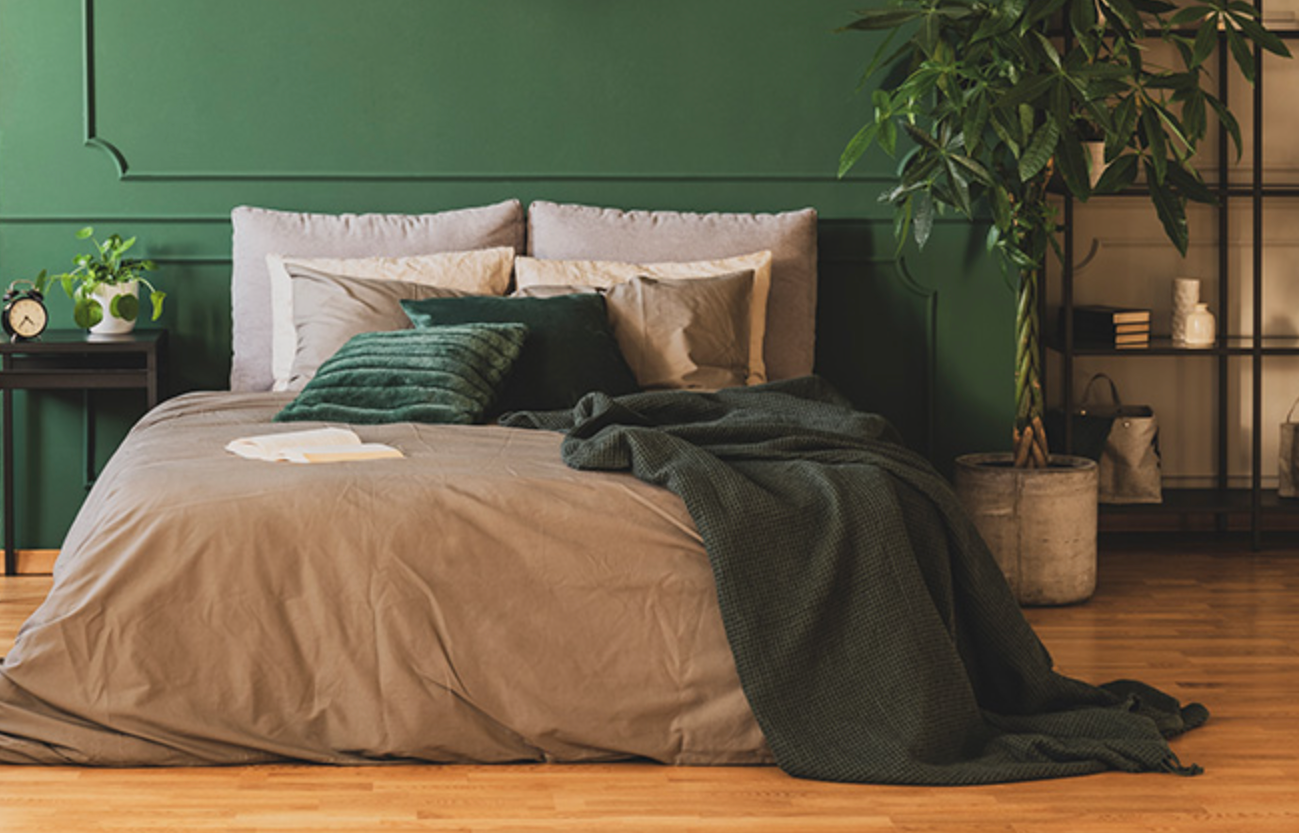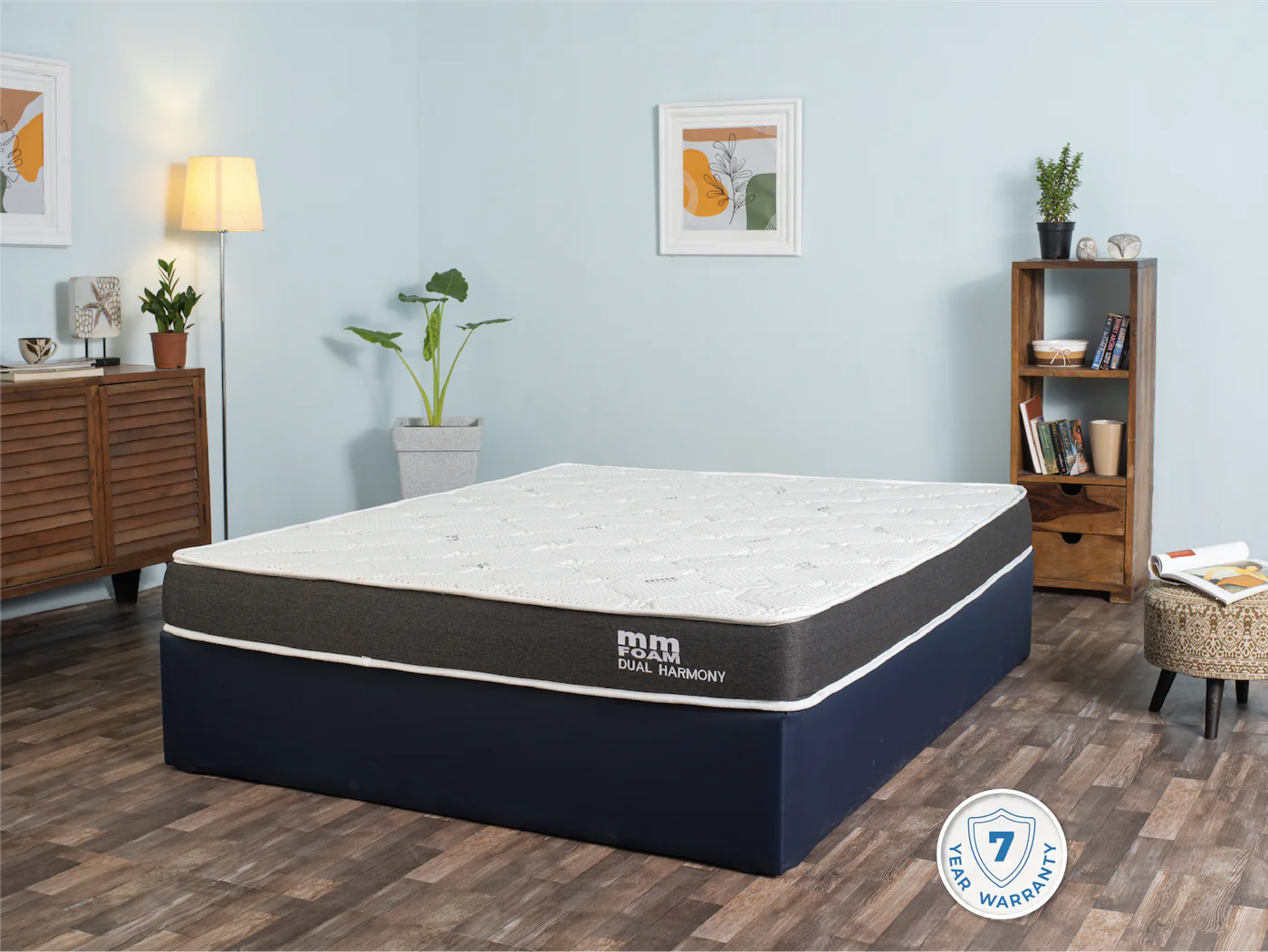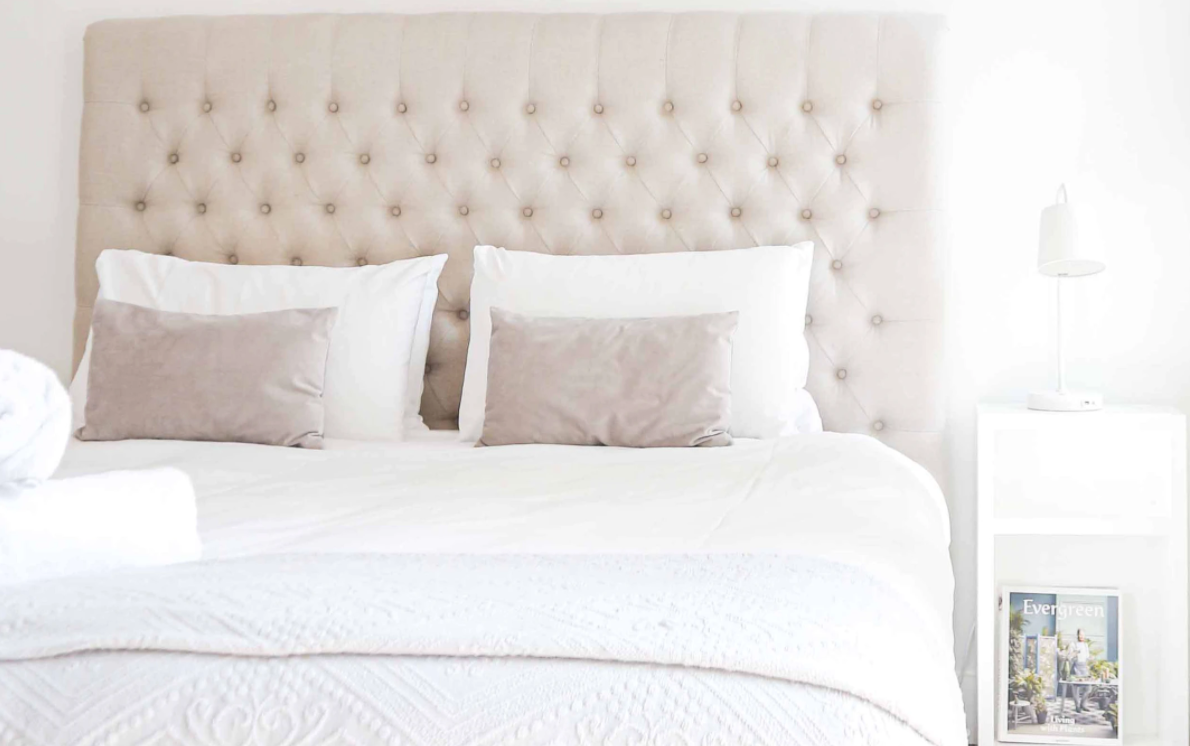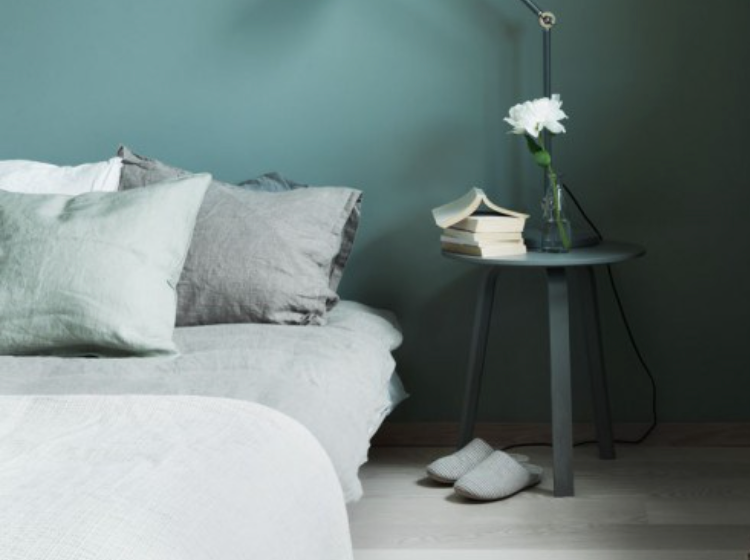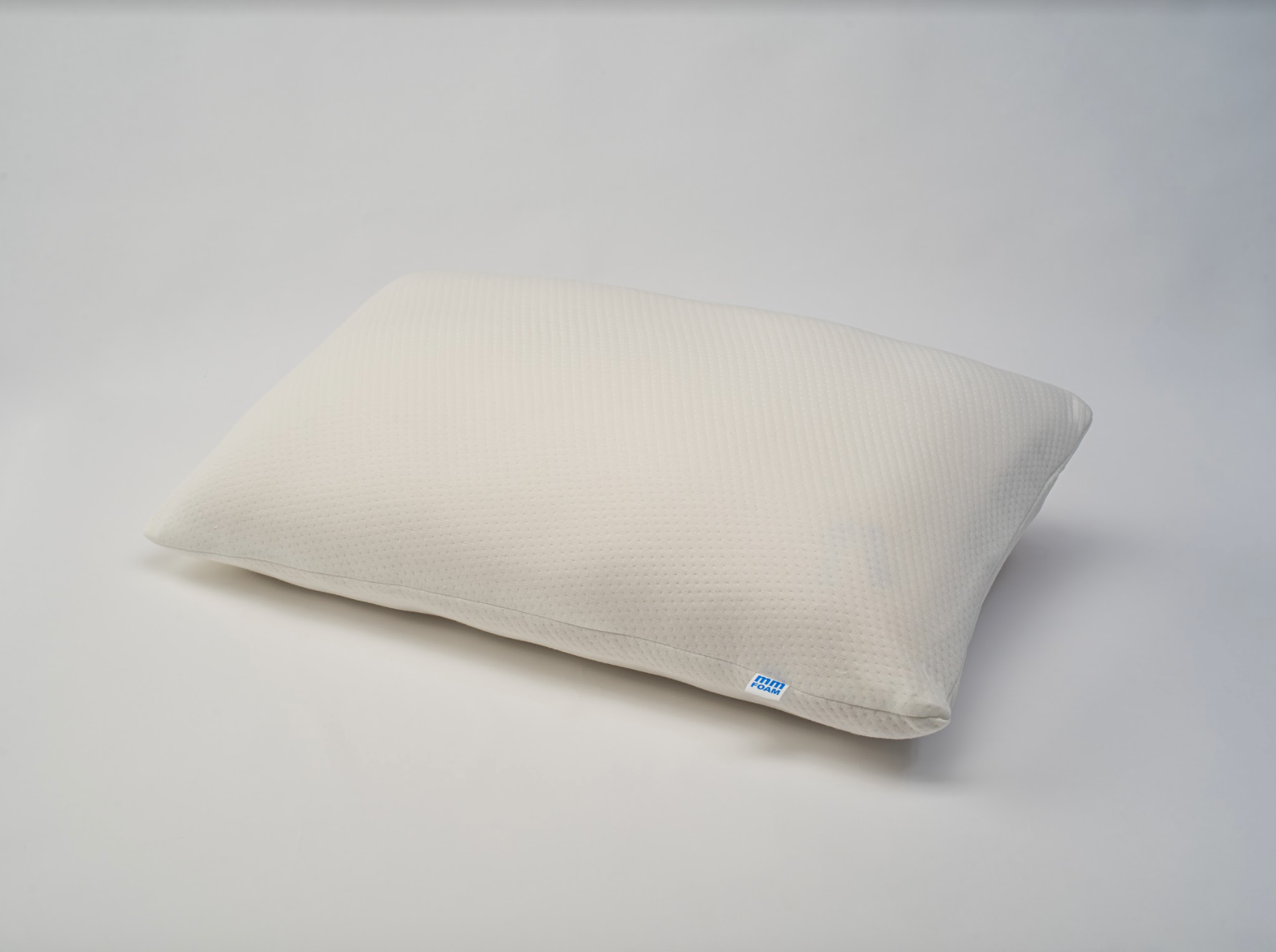Your cart is empty
Looks like you haven't added anything to your cart yet

What is the best sleep position for you?
Getting a good night's sleep is an integral part of your overall health and well-being. There are many factors (like sleeping schedule, quality of mattress & pillow and sleeping position) that impact your sleep quality and can alter your overall sleep experience, too.
Among all these factors, your sleeping position is one of the prime factors that can improve or disrupt your sleep. Scientific studies confirm that body postures and movements during sleep have a strong association with sleep quality and various health outcomes.
Selecting a proper sleeping position as per your health conditions (back pain, acidity or heartburn, sleep apnea etc.) aids in reducing stress on spinal tissues and offers great help in dealing with existing concerns. A proper sleeping position can optimize your sleep and allow you to rest better at night.
What are some common sleeping positions? What are their benefits and drawbacks? And how can you modify your sleeping posture to improve your sleep quality? Read on to know more!
What is the best sleeping position?
Unfortunately, there is no straightforward answer to this question. There is no single sleep position that suits everyone’s sleeping needs. Different sleeping positions offer different benefits. Each of them could impact your sleep and overall well-being.
Expert suggests that the best sleeping position keeps your spine supported and helps in maintaining a neutral spinal alignment. An ideal sleeping position keeps your head, neck, spine and hip in alignment and helps you get a good night’s sleep.
In general, back and side sleeping positions are considered better options than stomach sleeping positions. These two sleeping positions reduce pressure on your back and help in alleviating back and neck pain.
However, your personal sleeping needs, health conditions and other lifestyle factors like your age or pregnancy command equal importance in determining which sleeping posture will work best for you?
In addition, you can change or modify your existing sleeping position by putting in gradual efforts. You can use pillows or rolled towels to tweak or modify your sleeping posture. These small changes can enhance your sleep quality and let you get more restful sleep.
Common sleeping positions and their benefits and drawbacks
There are mainly three common sleeping positions:
- Back sleeping position.
- Side sleeping position
- Stomach sleeping position.
Each sleeping position has its advantages and disadvantages. You can opt for anyone as per your personal preferences. Let's dive in to know more about each sleeping position and help you decide which can be more suitable for your sleep needs?
Side sleeping position
The side sleeping position is one of the most popular sleeping positions. Approximate 60% of people adopt the side sleeping position while sleeping. There are three common varieties of side sleeping positions:
- Fetal side sleeping position: As the name suggests, this side sleeping position mimics the position of the fetus in the womb. In this position, the sleeper curls up their body and keeps their knees up to the chest.
- Yearner side sleeping position: Yearner position is similar to the fetal position except for one difference. In the yearner position, side sleepers stretch their arms as if yearning for something. This side sleeping position is better than the fetal position and reduces pressure on the wrist joint.
- Log side sleeping position: This is a less popular side sleeping position. In this position, sleepers keep their legs extended straight and arms in place. This position may cause shoulder pain in some people.
Benefits of side sleeping position
There are many benefits of the side sleeping position. Few are mentioned below.
- The side sleeping position supports your spine and helps in relieving pressure points. It is a good position if you suffer from back and neck pain.
- Side sleeping act as a digestive aid and helps in good digestion. It is believed that sleeping on the left side helps in reducing acid backflow and reduces the symptoms of acidity, heartburn, and GERD.
- This position is also considered great for brain health and helps in reducing brain waste.
- Great position for pregnant women as this help in proper blood circulation to the fetus and reduces the pressure of the growing belly. Ideally, pregnant women should sleep on the left side. However, they can switch between right and left-side sleeping positions to make themselves comfortable.
- Side sleeping is also beneficial for those who suffer from sleep apnea, snoring or other obstructive sleeping disorders. Side sleeping helps in preventing obstruction of airways and reduces obstructive sleep disorder symptoms.
Who should adopt a side sleeping position?
The side sleeping position is a recommended position for:
- Pregnant women.
- For people with back and neck pain.
- For people who suffer from sleep apnea and snoring.
- For reducing acidity, heartburn and GERD symptoms.
- Older people.
- Heavy individuals.
Who should avoid the side sleeping position?
Some conditions ask for avoiding the side sleeping position:
- People who suffer from shoulder pain: side sleeping position may put pressure on your shoulder and may worsen your existing shoulder pain condition.
- The side sleeping position also causes creases on one side of your face due to constant pressure while sleeping. This may lead to wrinkle formation in susceptible individuals.
How to modify the side sleeping position?
You can use small pillows between the knees to support your side sleeping position. Placing the pillow between the knees helps in maintaining a spinal alignment. Additionally, you can also use rolled towels to fill in any gaps, which helps in aligning your spine from hips to head and create better spinal support.
Moreover, you should avoid sleeping in the fetal side sleeping position, if you are prone to back or neck pain. This side sleeping position can put an extra strain on your spine and may worsen your back or neck pain symptoms.
Mattress recommended for side sleepers - https://mmfoam.com/collections/natural-latex-mattress
Back sleeping position
The back sleeping position is the second most popular sleeping position which offers many health benefits. Back sleeping keeps your spine in a neutral position and helps in maintaining a neutral spinal alignment.
There are mainly two types of back sleeping positions:
- Soldier back sleeping position: in this back sleeping position, sleepers keep their arms and legs straight at their sides, just like a soldier. This position offers good back and neck support but it can worsen the symptoms of sleep apnea.
- Starfish back sleeping position: as the name suggests, in this back sleeping position, sleeper keeps their arms overhead and create a shape like a starfish while sleeping. This sleep position may relieve lower back and neck pain.
Benefits of back sleeping position
There are many benefits of the back sleeping position. Such as:
- Back sleeping provides good support to your back and hip joints. This position can help in reducing back and hip joint pain by offering adequate lumbar support. However, some people feel that sleeping on the back aggravates their pain condition. Expert suggests that using a medium-firm mattress with a back sleeping position is highly beneficial and helps in reducing pain and stiffness.
- Back sleeping is also helpful for allergic patients who suffer from stuffy nose and nose congestion. Back sleeping keeps the airway open and helps in easy breathing.
- This sleeping position is also a preferred option for preventing wrinkles. Unlike side sleeping, there is no pressure build-up on your facial skin in the back sleeping position.
Who should adopt the back sleeping position
- People who suffer from back and neck pain.
- Allergic patients who had frequent nasal congestion and stuffy nose.
- People who are concerned about skin issues like the development of wrinkles.
Who should avoid the back sleeping position?
- Pregnant women should avoid sleeping on their back. Back sleeping positions can interfere with blood circulation and may increase the risk of stillbirth or premature labour in the third trimester.
- Back sleeping is not a recommended position for people who suffer from heartburn, acidity or GERD. Back sleeping may cause a backflow of acid and may aggravate their existing symptoms.
- This position is not a suitable position for people who suffer from sleep apnea, snoring or other obstructive sleep disorders. Back sleeping may collapse the airways and may worsen their disease symptoms.
- Older or heavy individuals should also avoid the back sleeping position. This position does not support the easy breathing in overweight people and may make them uncomfortable while sleeping.
How to modify the back sleeping position?
You can place a pillow below the knees while sleeping in the back position. Pillow helps in maintaining neutral curvature of the spine and also helps in reducing pressure in the lower back. Additionally, you can also place a small rolled towel under your back for getting extra lumbar support.
Mattress recommended for back sleepers - https://mmfoam.com/collections/latex-hybrid-mattresses
Stomach sleeping position
The stomach sleeping position is not recommended by sleep experts. The stomach sleeping position puts pressure on your back and causes a spinal misalignment. In general, this position does not offer many benefits and one should avoid sleeping on their stomach. However, if this is your preferred sleeping position, you can modify this sleeping posture to overcome the drawbacks and optimize the benefits.
Who should adopt the stomach sleeping position?
A stomach sleeping position can help in reducing sleep apnea and snoring symptoms and can help you sleep better if you make some modifications.
Who should avoid the stomach sleeping position
- Pregnant women.
- People who suffer from acidity and heartburn.
- People who suffer from back and neck pain.
How to modify the stomach sleeping position?
You can place a thin pillow underneath your lower abdomen. This thing keeps the hip elevated and reduces back strain. Also, it helps in maintaining a neutral spinal alignment and reduces the drawbacks of the stomach sleeping position.
So, these are some common sleeping positions and tips to modify them to optimize the benefits. Sleep right and wake up positive to seize the day!- Choosing a selection results in a full page refresh.

